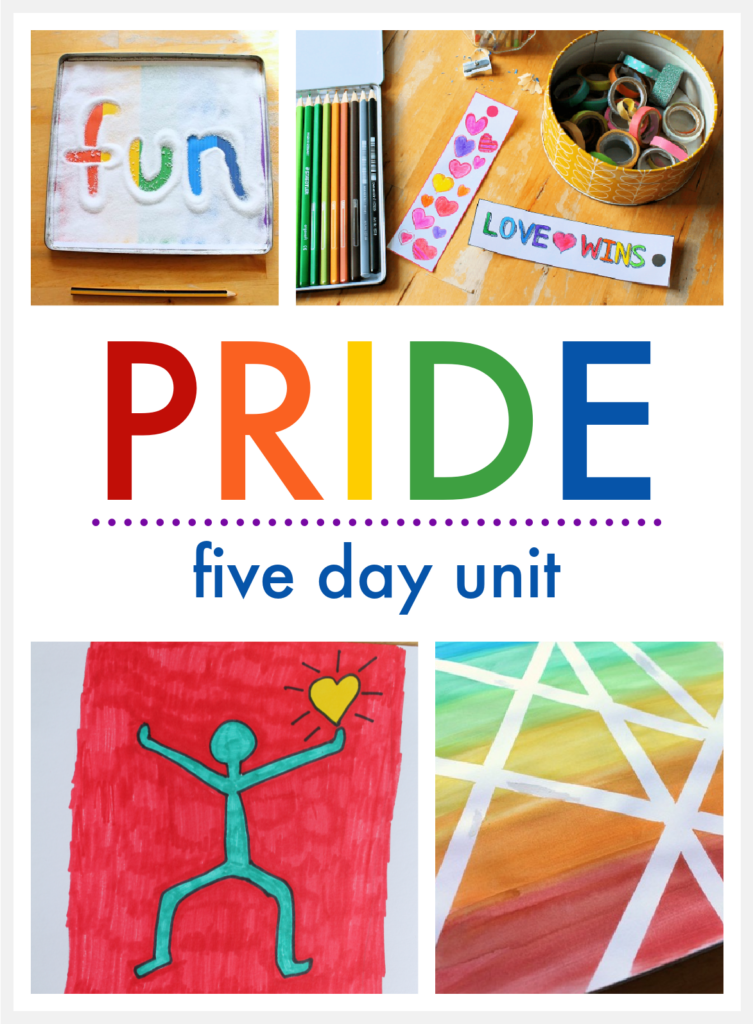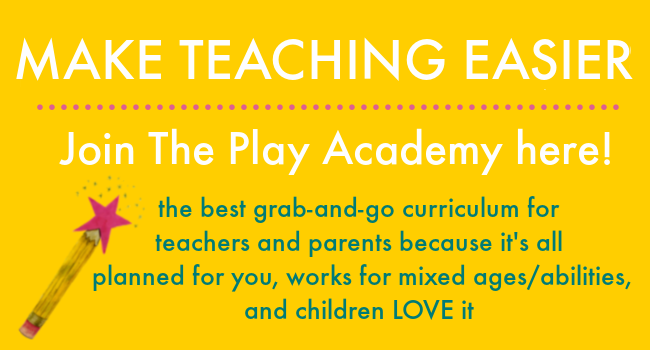Use this age-appropriate LGBTQ+ Pride lesson to introduce your children to Pride month and start a conversation about identity, inclusivity, and fairness for all.
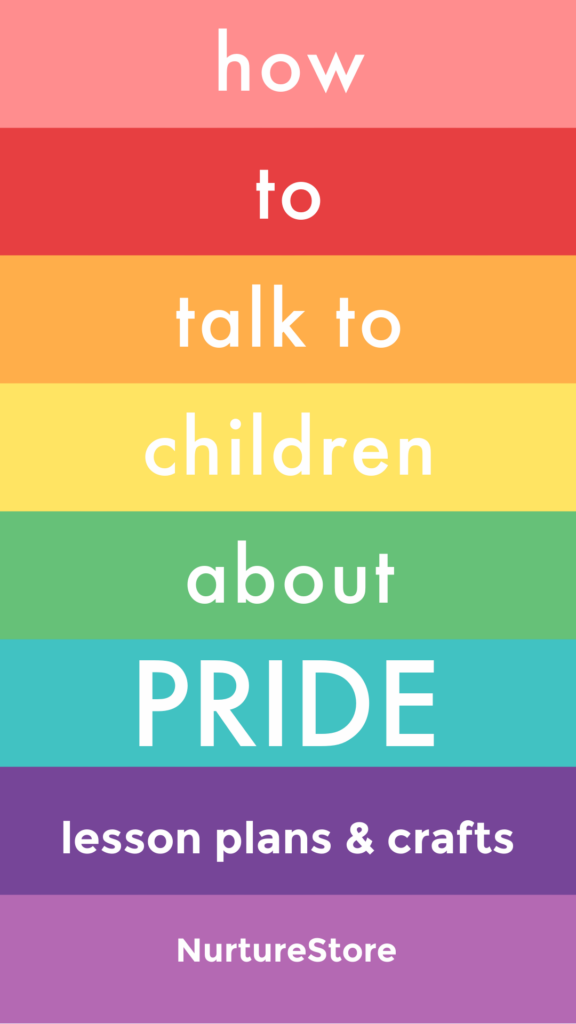
How to introduce children to LGBTQ+Pride
In this age-appropriate Pride lesson plan your children can:
:: Learn about LGBTQ+ Pride: how it began, how it is celebrated, why it is so important
:: talk about who is in the LGBTQ+ community and what is means
:: talk about why Pride is still so important today
:: discuss and make plans for their own Pride celebration, as members of the LGBTQ+ community or as allies
How to talk with children about Pride
You can approach talking about Pride and the LGBTQ+ community with your children as you do any important subject:
:: Ask your children what they already know
:: Answer the questions they ask with honesty and openness
:: Go at their pace, giving information they are seeking, at the time they seek it
:: Help them to find out things that they are curious about
:: Make the learning an ongoing conversation that develops as they do.
You might not know yet whether your child is part of the LGBTQ+ community.
If you are teaching a class of children it would be unlikely that no child in the class will realise they are part of the community.
Other children in your family / class will not identify as LGBTQ+, and others will have LGBTQ+ family and friends.
This Unit is created with everyone in mind.
It is so important for the wellbeing of individual children and the whole of society for us to raise children who understand who they are; have understanding and respect for others; and expect, uphold, and fight for the rights of others.
It is not our role now, or ever, to give our own labels to our children or push them to talk about their LGBTQ+ status (or that of members of their family), but it is our role to encourage conversations, make sure our lessons are inclusive, and celebrate LGBTQ+ rights.
Young children have a clear understanding of fairness and you will likely find their views on LGBTQ+ issues to be accepting, inclusive and refreshing.
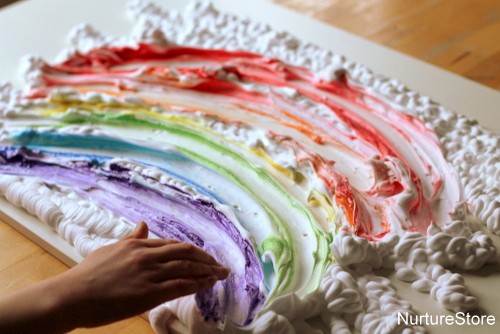
Further Resources
This lesson idea is created as one that any child can participate in. Depending on your child and your family circumstances you might like to go deeper or address particular areas within the LGBTQ+ community, so I have included a selection of resources that you might find useful:
:: Children 1st resources for parents, including FAQ and definitions
:: Stonewall resources for schools
:: Alison MacDonald at No Time for Flashcards has a great list of LGBTQ+ books for children here
:: And you can download our complete, ready-made Pride Unit here

What is Pride?
Pride is a celebration of the LGBTQ+ community.
Pride events often take place in June and many cities have Pride parades through their streets.
Pride parades are joyful, colourful marches, with many people dressed in rainbow colours and waving rainbow flags.
People parade to show their pride in being part of the LGBTQ+ community and to call for everyone to be treated fairly, safely, and with respect.
Who is in the LGBTQ+ community?
LGBTQ+ stands for Lesbian, Gay, Bisexual, Transgender, Queer and others. These names refer to how people feel about themselves and who they love, for example:
A gay man is a man who loves other men.
A lesbian woman is a woman who loves other women.
A bisexual is someone who might love anyone of any gender.
A transgender person is someone who feels differently than the label they were given when they were born. For example, when they were born a doctor or midwife might have said they were a boy but now they realise they are a girl.
An intersex person is someone who was born with a body that is naturally different from what we tend to think of as female or male.
The history of Pride
Sometimes people who are part of the LGBTQ+ community are not treated fairly.
Some people are mean to people in the LGBTQ+, calling them names and being unkind to them.
Some people in the LGBTQ+ community cannot have the job they want, live with the family they want or get married because of the unfair rules other people set.
Pride parades started because of this unfairness.
In the 1970s, in cities like New York and San Francisco, people in the LGBTQ+ community began to organise Pride marches. The marches were both serious and fun.
They celebrated everyone in the LGBTQ+ community and their right to be themselves and live their lives like anyone else, and they also demanded change, so that people in the LGBTQ+ community will no longer be treated unfairly.
Nowadays, Pride parades take place in many countries around the world. They can be small parades in tiny villages or huge city-wide parades that take over the streets and see all the local businesses joining in and all the buildings decked out in rainbows. There are even Pride parades in Antarctica! All of them celebrate the LGBTQ+ community and call for fair treatment for everyone.
Things have improved for the LGBTQ+ community in many ways.
More people now recognise that everyone deserves the same rights and treatment, and they want to live in inclusive communities where everyone is welcome.
In many countries LGBTQ+ people can get married and have families.
In some counties though, people in the LGBTQ+ community are still treated very unfairly and so Pride is as important as ever, to fight for the right of everyone to live their life, how they want to.
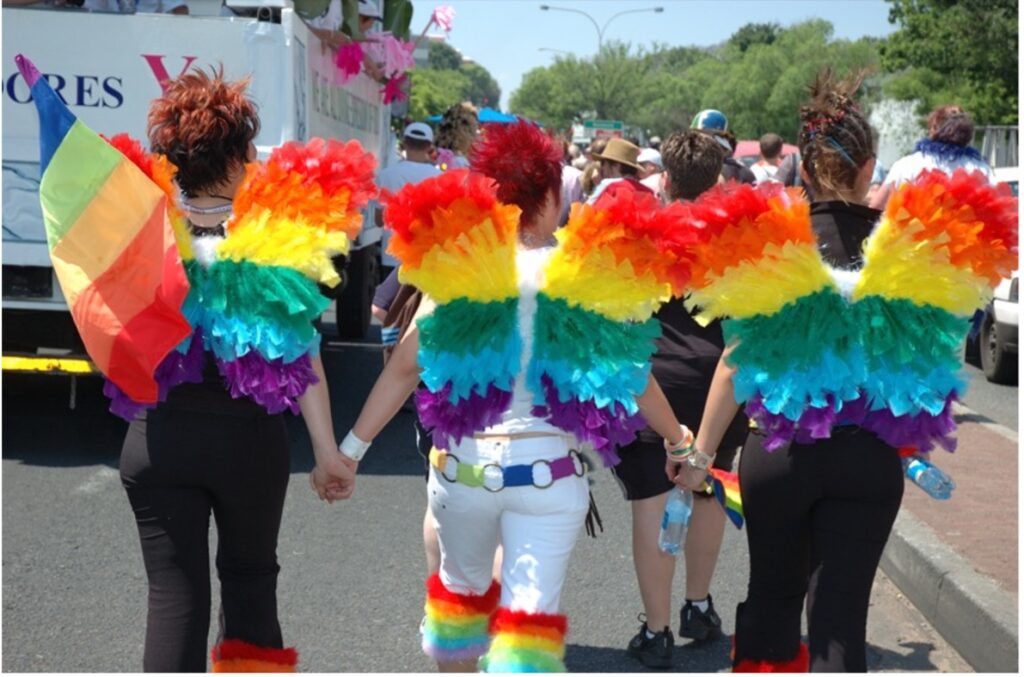
How will you celebrate Pride?
Pride is especially celebrated in June, but of course we should remember to treat everyone fairly all year round.
What will you do to celebrate Pride?
Talk about how Pride is celebrated in your community and how you want to join in. You might:
:: take part in a Pride parade or organise one of your own
:: decorate your home / school with Pride flags
:: read books by and about people from the LGBTQ+ community (see the link in the Further Resources section above)
:: listen to music and watch films by and about the LGBTQ+ community
:: let your LGBTQ+ family, friends and neighbours know that you love and support them
:: write to your legislators and representatives and ask them to support LGBTQ+ rights
More Pride resources in our complete, ready-made Pride Unit
Download our ready-made Pride thematic unit from the Play Academy and you’ll be all set to teach a complete unit of Pride lessons.
In our Pride Unit lesson plans your children can:
:: learn about Pride, how it started and why it is important, and make a mini book
:: take part in a Raise Your Hand pride celebration
:: learn about artist Gilbert Baker and the Pride flags, and make their own identity flag
:: add rainbows everywhere to build skills in math and literacy centres
:: learn about artist Keith Haring and create art inspired by him

Bonus Pride thematic unit printables
The Play Academy’s thematic units come with practical printables that make the lessons more engaging for your children and easier for you to teach.
No need to go searching for printables to accompany your lessons, they’re all included when you download your chosen unit.
In this Pride Unit you’ll receive these bonus printables:
:: a Pride mini book
:: a Flag template
:: Rainbow wheels for math activities
:: Rainbow number fish for math activities
:: Rainbow heart alphabet for literacy activities
:: Rainbow words sheet for spelling practice
:: Rainbow sensory writing tray insert for mark making and writing
:: Rainbow alphabet matching cards for literacy activities
:: Colour-in bookmarks to share with family, friends and in your community
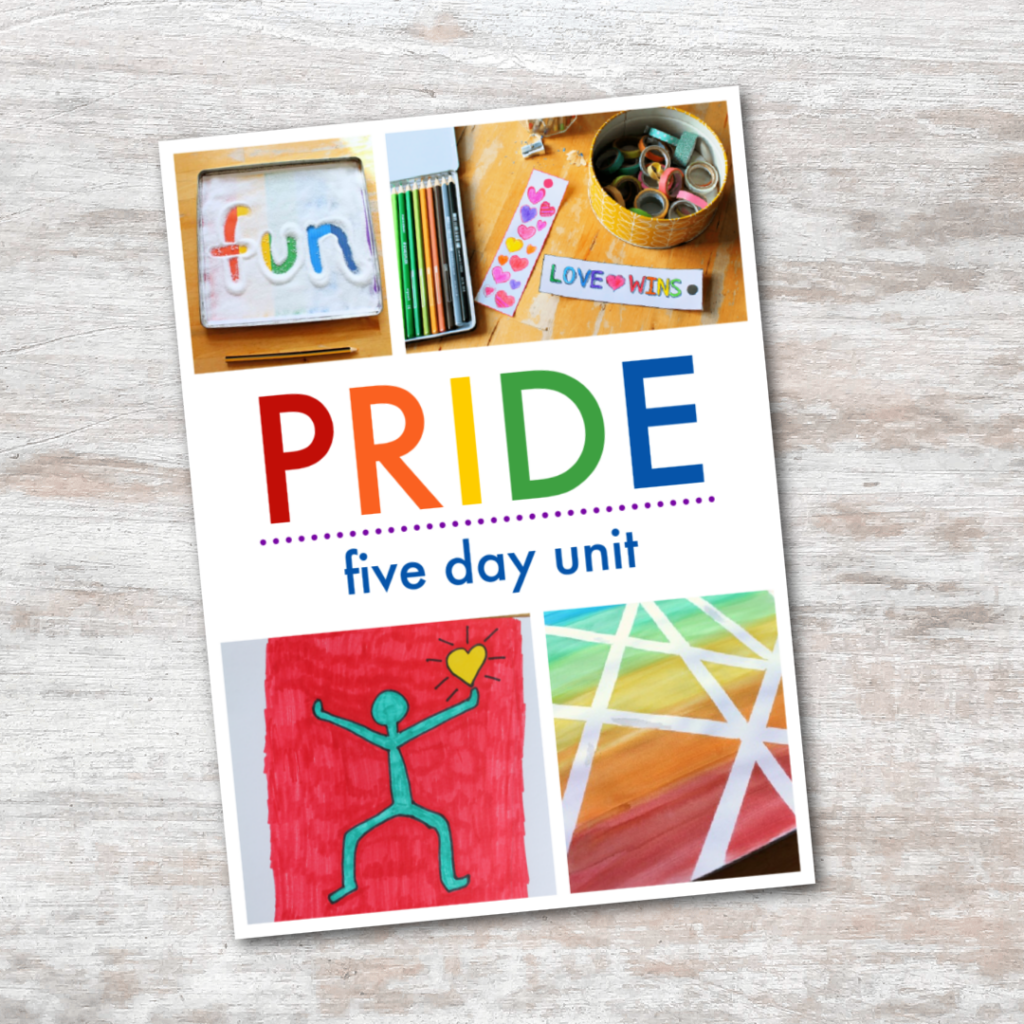
How to download this Pride thematic unit
You can download this unit along with over 50 more from NurtureStore’s Play Academy.
If you are already of the Play Academy, you can download this unit straight away from our Library here.
If you are not yet a member, find out more and choose your first unit here. Your teaching is about to get a whole lot easier!


